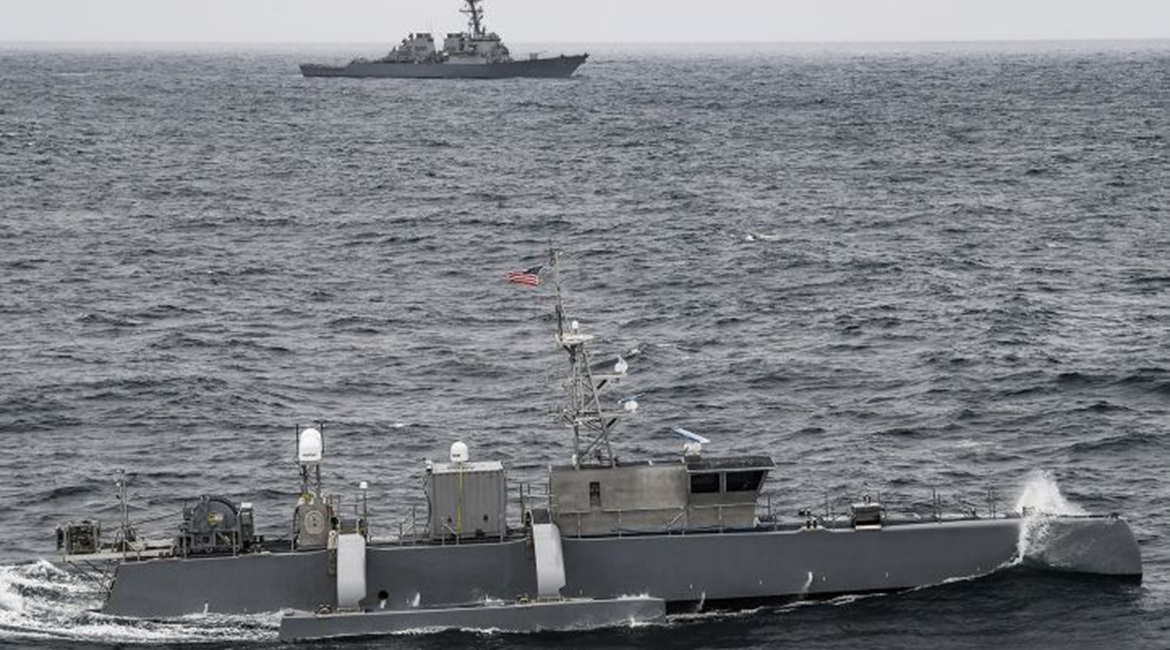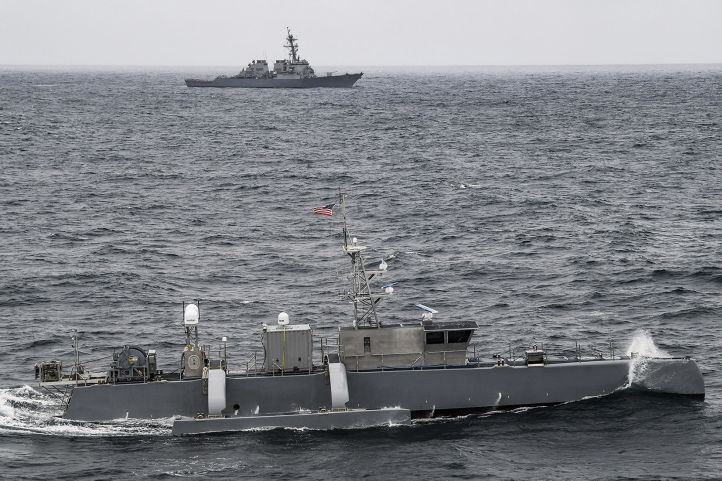
The US Navy (USN) has completed a major Pacific Fleet exercise designed to demonstrate the operational pay-offs realisable through the closer integration of multidomain manned and unmanned capabilities.
Known as ‘Unmanned Integrated Battle Problem (UxS IBP) 21’, the exercise was executed by the US 3rd Fleet from 19 to 26 April under the command of Rear Admiral James Aiken, commander, Carrier Strike Group Three.

The MDUSV Seahawk seen while participating in ‘UxS IBP 21’. The destroyer USS Fitzgerald is behind. (US Navy)
The scenarios and vignettes were designed to inform the operational community, navy warfare centres, and developers as to the incorporation and integration of unmanned systems capabilities into mainstream fleet operations and battle plans.
‘UxS IBP 21’ was controlled from the 3rd Fleet Joint Operation Center in San Diego, California. A total of 29 different unmanned systems participated in the event, of which approximately half were unmanned surface vehicles (USVs), about 30% were underwater vehicles, and the remainder aerial platforms.
While not all systems were publicly identified, unmanned assets known to have taken part in the exercise included the two medium-displacement unmanned surface vessels (MDUSVs) Sea Hunter and Seahawk ; and MQ-8B Fire Scout and MQ-9 SeaGuardian unmanned aerial vehicles (UAVs); a Vanilla ultra-long-endurance UAV; the Office of Naval Research’s Super Swarm Project; the MANTAS T38 Devil Ray USV; the Advanced Acoustic Concepts Angler seabed and mine warfare kinetic effector; a Carina undersea glider; a US Marine Corps Long-Range Unmanned Surface Vehicle; the Ocean Aero Triton-Class Dual-Modality Underwater and Surface Autonomous Vehicle; and the SeaLandAire ADARO USV.
For the purposes of ‘UxS IBP 21’, the General Atomics MQ-9B SeaGuardian UAV was configured with a sonobuoy dispenser system pod. Operating in conjunction with the Ticonderoga-class guided missile cruiser USS
Looking to read the full article?
Gain unlimited access to Janes news and more...


